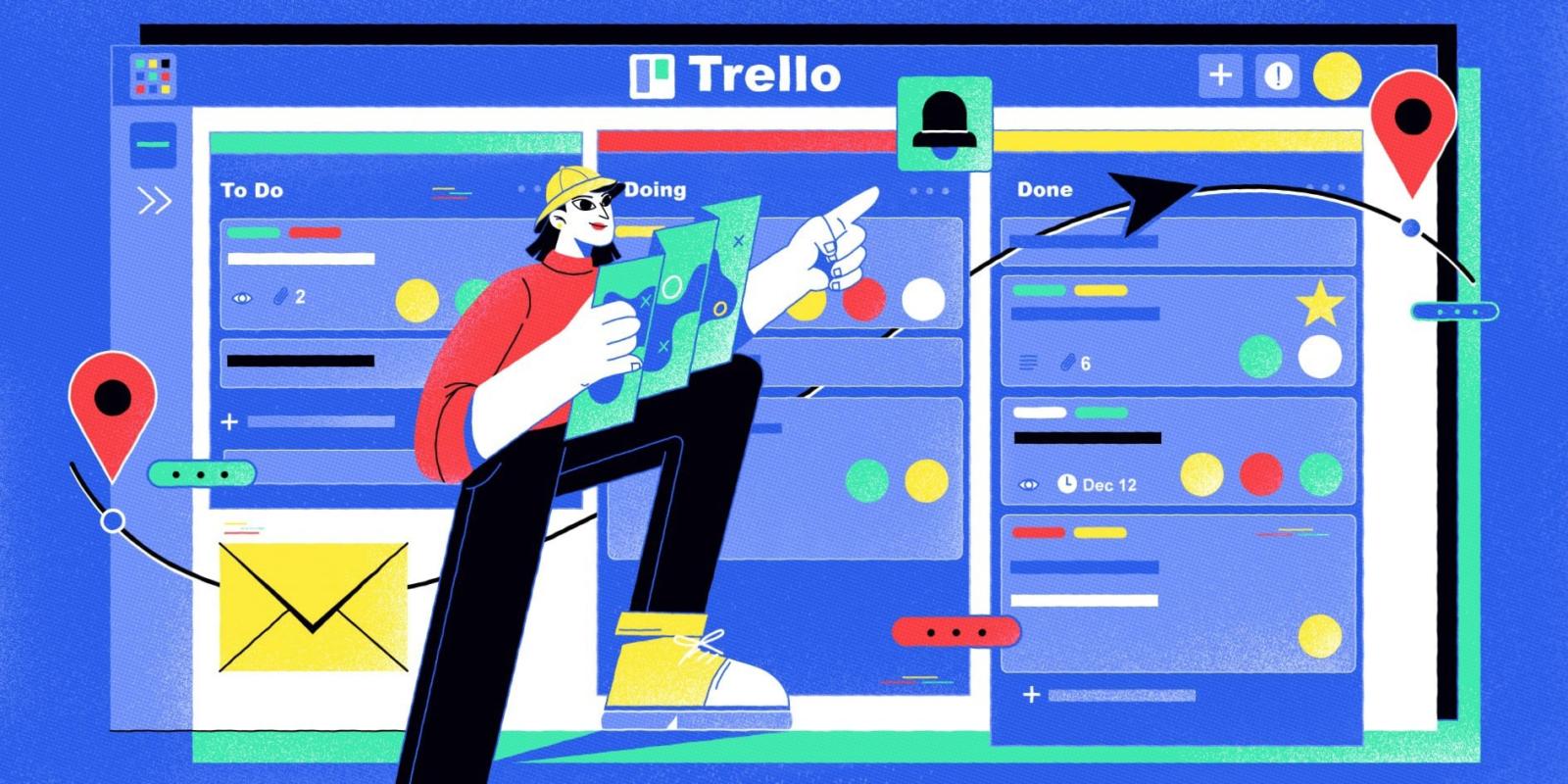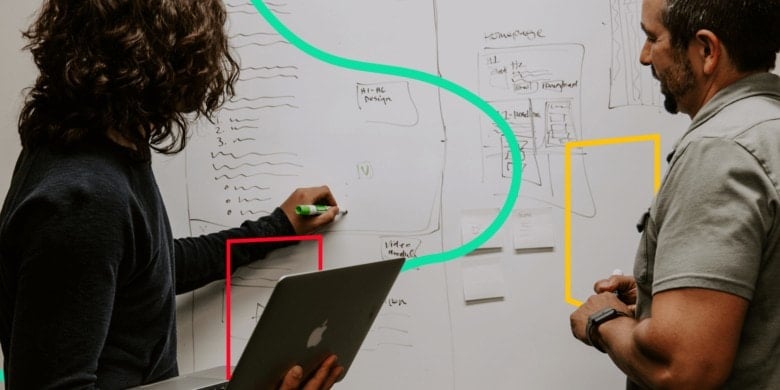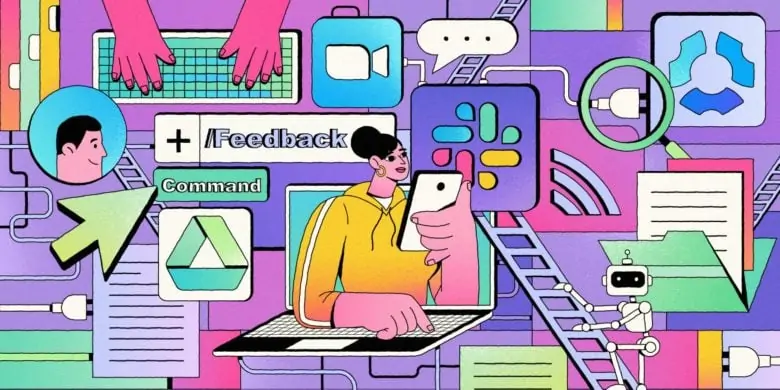Using Trello for project management is extremely helpful if you’re a project manager working on a budget. The free, Kanban-based task management tool helps you manage projects and collaborate better with teams.
There are a lot of project management tools out there. But Trello stands out from the crowd with its simplicity. It provides a straightforward system for organizing and monitoring projects at a glance.
It’s so simple that you might be tempted to pass it up. But Trello’s simplicity can be a strength. Let’s look at how it can turn you into an organizational ace.
Boost your team’s efficiency with Hubstaff's productivity tools
What is Trello used for?
Software developers, ad agencies, and designers are just a few examples of teams that benefit from the project management potential of Trello. Whether you need to organize an entire team or just boost your productivity, Trello can help you:
- Follow your production workflow
- Keep tasks organized and track task progress
- Manage your development schedule
- Keep an eye on a content marketing campaign
- Give your team complete visibility into future projects, add labels, and add files to keep documents in one place
- Track the hiring and onboarding process at your company
Without physical conference rooms, bulletin boards, and other conventional project management tools, it can be challenging for remote teams to stay organized.
Fortunately, Trello project management software works perfectly for a dispersed workforce who must stay on the same page and track project progress.
A remote team using Agile methodology can use it to store their Scrum boards. If you prefer to work with a Kanban workflow, you can manage your Kanban workflow with Trello.
Trello project management features
Trello isn’t just for kicking off projects. It will also help teams throughout every step of the process, from planning through execution. If you’re new to project management, here’s a quick breakdown of what the entire process entails:
- Planning: As one might expect, the planning phase is when you conduct research, establish goals, and map out the strategy of your entire project. The idea is to identify the scope of your project. You’ll set goals with stakeholders and put together a budget.
- Setup: With your strategy in place, start putting the pieces of your project together. Whether your team is in-office or remote, it’s best to host a meeting to review the details. Share the project plan, cover everyone’s responsibilities, and answer any questions.
- Implementation: This stage is where ideas become actions. While you may start to feel like the bulk of your work is behind you, that’s hardly the case. It’s important to remain hands-on. Join meetings, collect progress reports, and provide updates to stakeholders as the big picture begins to come into focus.
- Closing: This is where you and the team put the finishing touches on your projects. While this stage is cause for celebration, you’re not quite done. The difference between good and great project managers is their ability to self-evaluate. Once the project is complete, take notes on what worked, what didn’t, and how you can make things run smoother in the future. It’s best to do this as soon as possible while the journey is still fresh in your mind.
Trello works at all of these phases. Here’s how you can implement it for better project management.
How Trello works
According to a 2020 survey, companies that undervalue project management report that 67% more projects fail outright. However, only 22% of organizations use project management software.
Tools like Trello are designed to ensure your projects don’t become another statistic. With Trello, you can:
- Use the timeline view to plan projects
- Switch to table view connects work across boards
- Integrate with calendar tools to help with time tracking
See board statistics and project data
After browsing through some tutorials online, it might be a little jarring to see what projects look like once they’re in full swing.
But, like all new things, you must break it down into smaller pieces. Here are the essential components you’ll need to understand to manage projects in Trello.
Boards
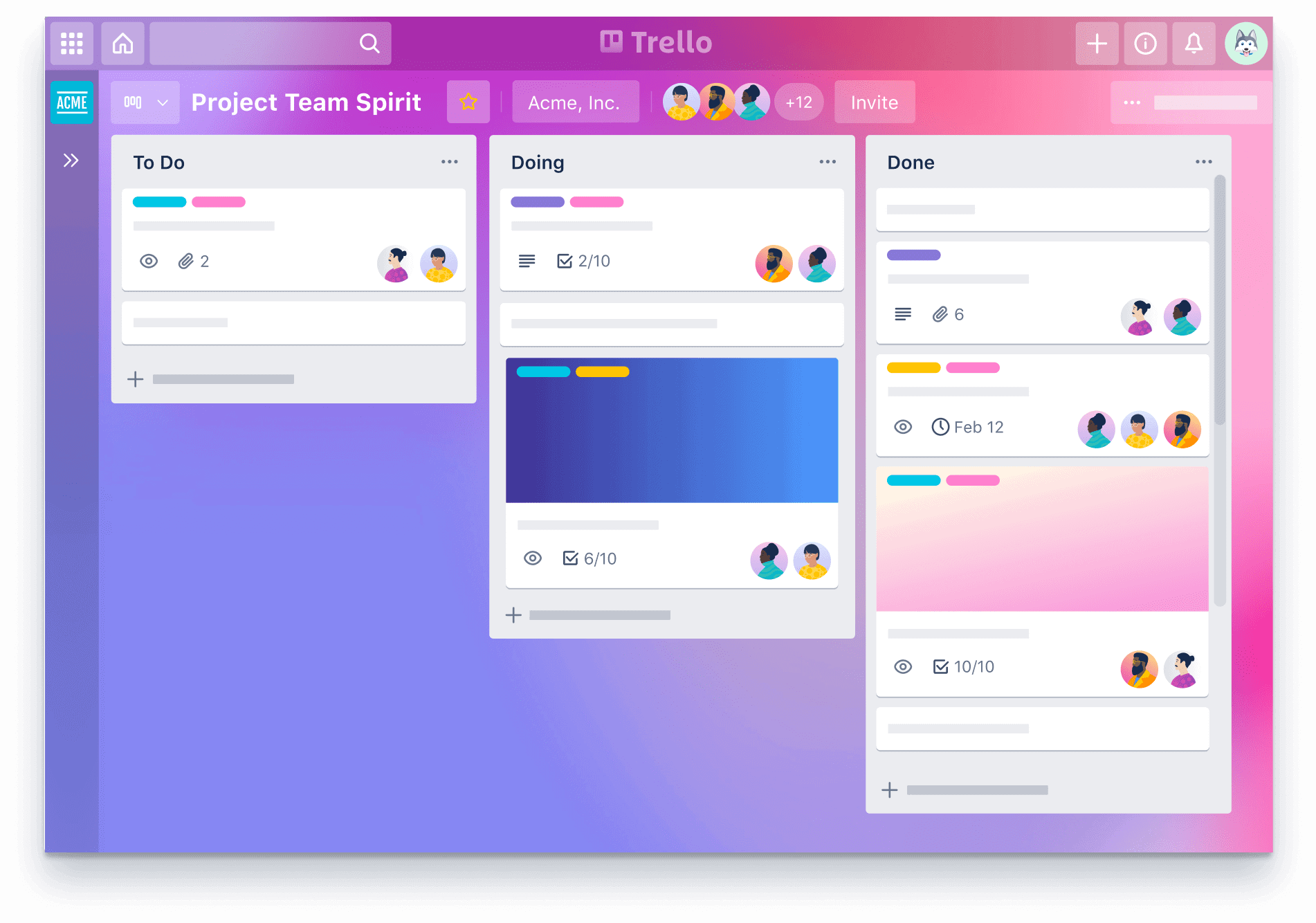
Before tools like Trello, the bulletin board was a popular way to organize thoughts. While technology has advanced quite a bit since then, the concept is still used digitally.
Trello boards are virtual bulletin boards. These boards will become where you “hang” your other tasks, to-dos, and notes. Unlike an actual bulletin board, Trello helps you get more organized, so clutter isn’t an issue.
Lists

Lists are columns for grouping subtasks for projects. These are the first layer of organization for your Trello boards.
As you dive deeper into your projects, you’ll create more and more lists. You might title them things like ideas, research, or backlog.
Once you’ve organized your board, it’s time to add tasks.
Cards
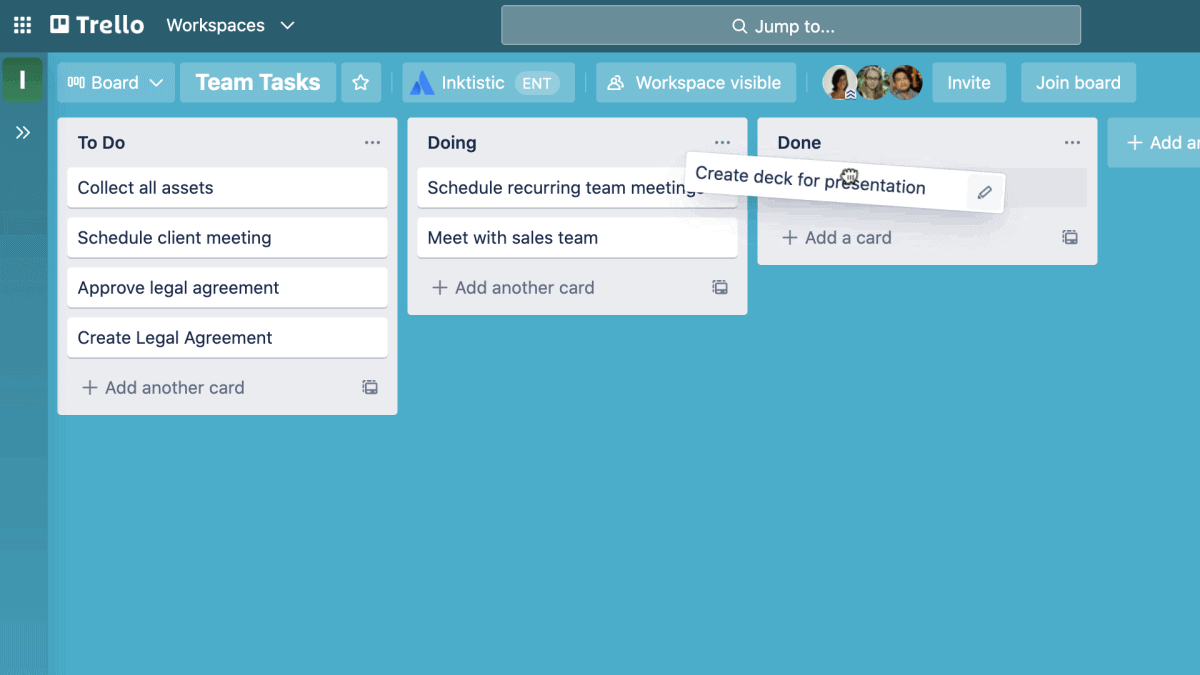
Cards are the basic building blocks of Trello — think virtual Post-It notes. You can move them around into lists, add due dates, and assign them to different teams.
You can also label cards for better organization. Create color-coded labels by adding a ‘#’ followed by your created label. Here are some examples:
- #lowpriority
- #highpriority
- #newfeature
- #Q4
When you click on a card, you can add text, attach files, and even add a checklist to break tasks down even further.
Task Assignments
A project management tool is only useful with the ability to assign tasks. Fortunately, Trello task assignments allow you to share your boards with your team. There are two ways you can accomplish this:
- Assign to a card: Open up a card. Select Members on the right side menu and search for your teammate(s).
- Assign to a checklist: Add to-dos within the checklist of a card. You can type @teammember next to any line item. This will also trigger an email notification if the assignee has them enabled.
Timelines
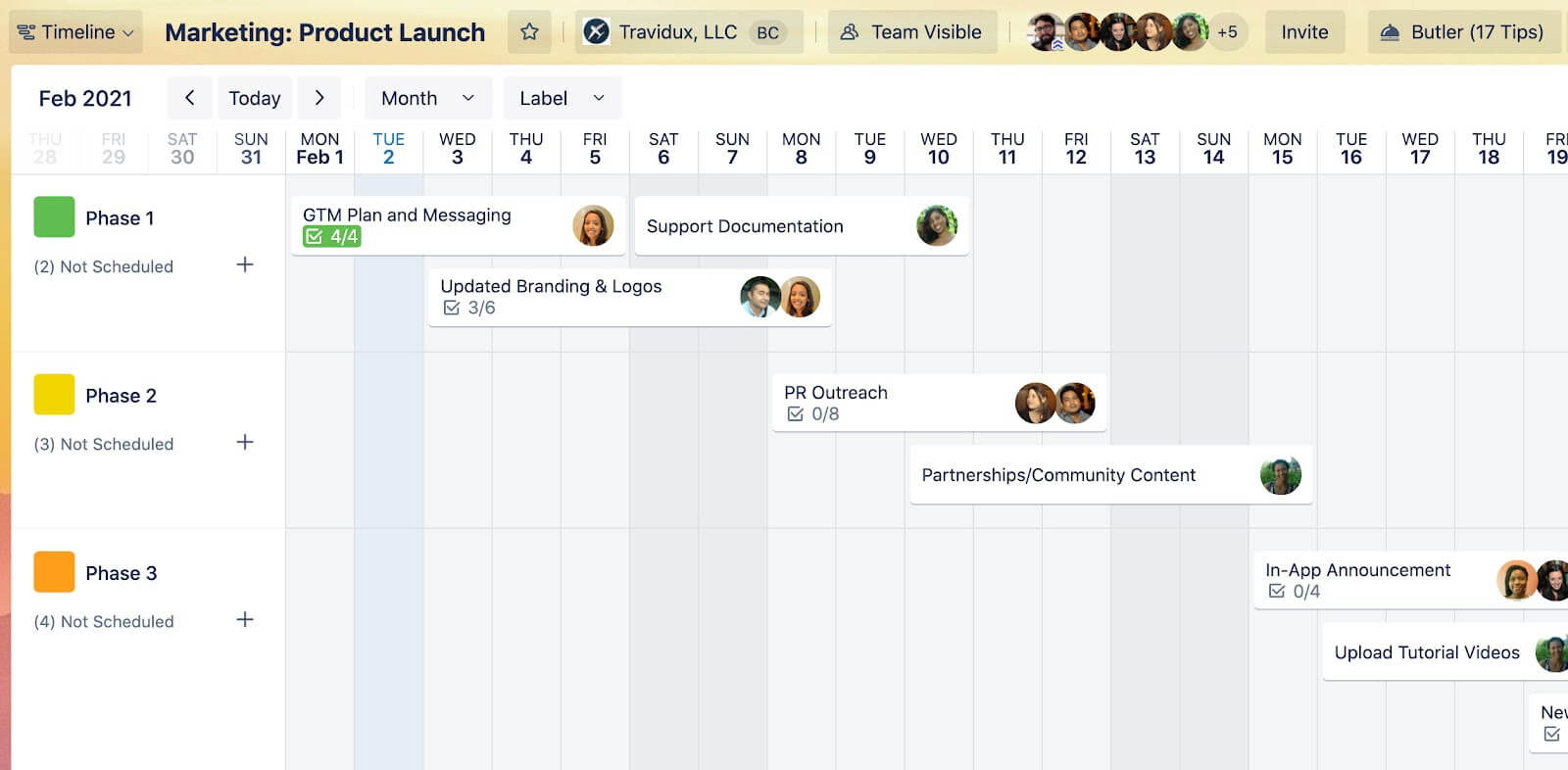
Timelines are one of the newest features in Trello. By entering your board’s drop-down menu, you can switch to the timeline view.
Similar to a Gantt chart, a timeline view lets you see your projects by the due date. Horizontal boxes give you a visual representation of how long each card will take to complete.
Additional filters allow you to organize your timelines by time frame, user, or label.
Calendars
Like other effective project management tools, calendars help teams stay on task with various projects. Tracking your project management process with a calendar allows you to track which project tasks must be completed by a specific date.
As a project manager, you manage your own calendar and your team’s — and occasionally an individual’s.
Trello doesn’t have a calendar view by default, but you can enable it with a Power-Up. For a project to go smoothly, it’s a good idea to do that.
Productivity Metrics
Trello’s built-in automation tool, Butler, allows you to gain some limited reporting access.
Unfortunately, it’s a little challenging to use. While much of Trello is user-friendly, Butler can be tricky for new members.
Trello pairs well with Power-Ups — easy-to-configure integrations with popular reporting, HR, and marketing tools for more robust reporting.
This is more cumbersome than other project management reporting tools. However, if you’re using Trello for project management, you can find workarounds to give you the data you need to do your best work.
Trello is a great email replacement
Email is chaotic. It might be necessary for talking with clients and having quick conversations, but it’s not an excellent way to organize and plan.
Even one-on-one email chains can get confusing. You’ll spend a lot of time searching for attachments and other details. This can hurt your productivity considerably.
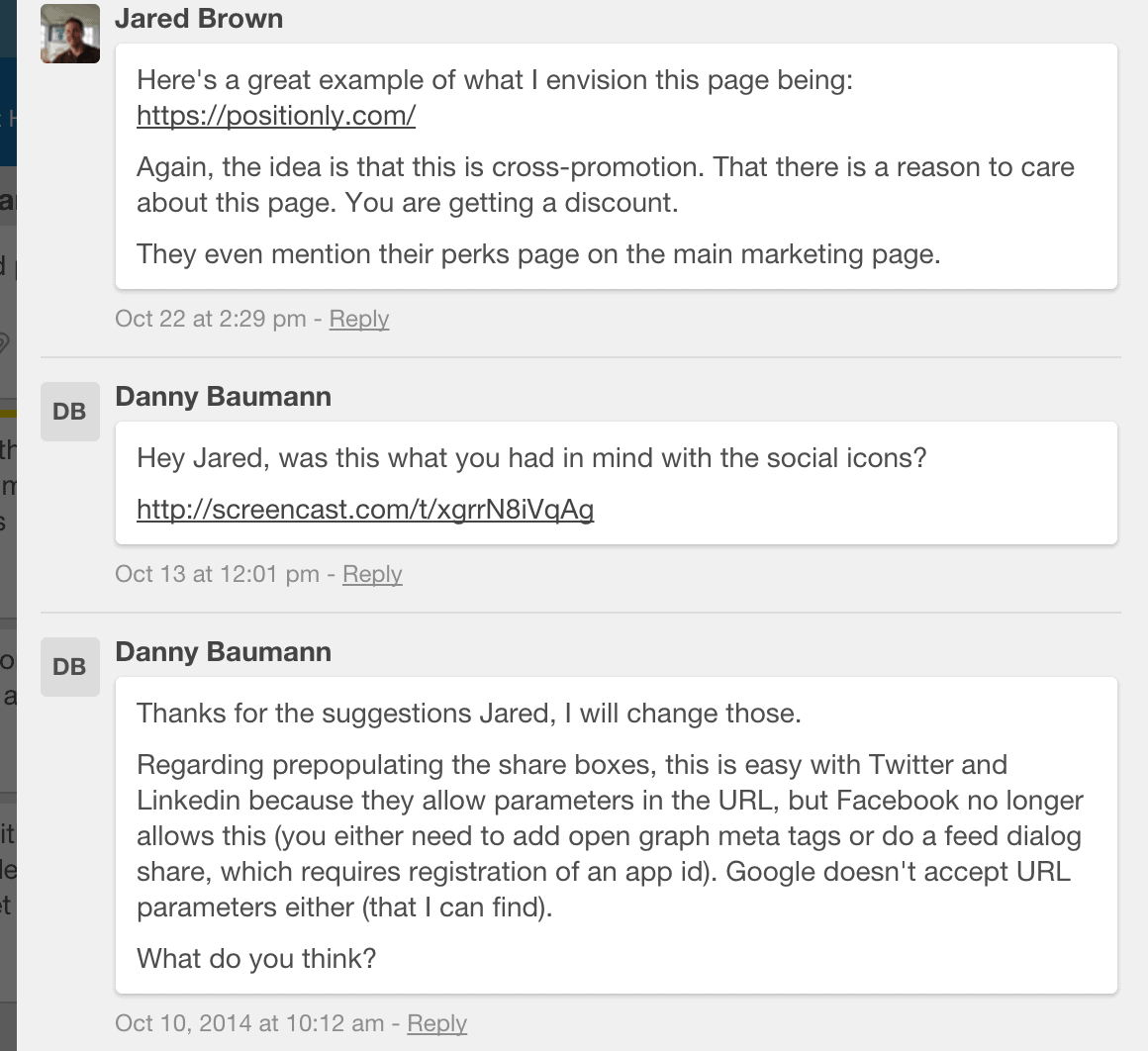
Long email threads containing multiple people are even worse. It can take a lot of work to follow along and find the information that pertains to you.
When used correctly, Trello acts as a replacement for those long, dreaded email threads. You can even tag specific people for increased clarity.
One of the great things about Trello is that conversations are all included within a card. This way, everything stays in the same place.
If anyone has clarifying questions or thoughts to share about a task, you don’t have to spend time looking for it. It’s all there.
Room for improvement: Where Trello is lacking
Trello is one of the most popular project management tools on the market, but it does have its fair share of shortcomings.
Users have cited interface issues, platform compatibility problems, and an overall lack of tangible data as areas where the project management tool comes up short.
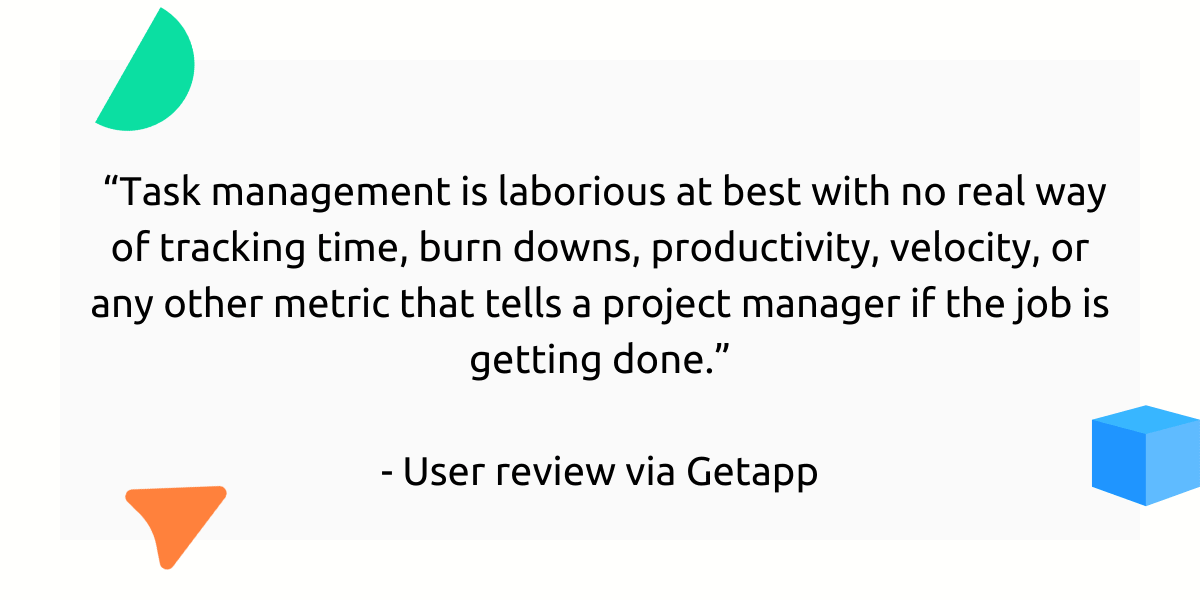
But what exactly do these issues mean for Trello users? Let’s explore them a bit closer.
No budgeting or invoicing tools
Unlike other project management tools, Trello lacks budgeting and invoicing features.
It’s one thing to track projects, but how do you know what they cost you? If you can’t see labor, materials, and training costs, it becomes challenging to stay on budget.
You can track these items separately using spreadsheets or specialized software. Alternatively, you can upgrade your Trello plan and get access to some basic invoicing features.
Limited upload sizes
When managing your projects, you’ll probably want to share your working files within Trello cards.
While you can do this in Trello, you might experience some frustrating storage limitations. In the free plan, you’re limited to just 10 MB uploads. This is pretty small, depending on your line of work.
Tools like Hubstaff Tasks are more enticing to designers, content creators, and other creatives who frequently share large files.
Too much flexibility
Trello has evolved and added features over time. While this makes it a flexible tool, it can be confusing to use, too. For instance, users have expressed frustration about closing down cards.
While you can archive cards in Trello, there’s no way to mark them as complete. Managing larger, complex projects across multiple teams makes it challenging.
If you have tasks that need to be completed across multiple projects, that can be challenging to organize. Other project management tools achieve this through the use of Epics. Unfortunately, Trello misses the mark here.
Managers may also be frustrated by the inability to see each team member’s responsibilities.
Limited organizational features
Individual team members have difficulty viewing their own responsibilities. To-do lists, sprint views, and other ways of organizing information don’t come standard in Trello.
Other project management tools let you isolate your tasks from the project as a whole. You can also drag and drop your assignments and order them by the highest priority.
While you can label boards based on priority, they contain tasks that others must also complete. This can get pretty confusing, especially for people who need to work on multiple boards simultaneously.
You can “watch” cards that you’re affiliated with, but you will invite even more notifications for subtasks within the card that don’t directly apply to your workload.
No Gantt charts or dependencies
Trello has a nice timeline view, but it doesn’t hit on what it aims to accomplish.
What sets Gantt charts apart from timelines is the ability to add dependencies. Instead of one linear timeline that shows due dates for tasks, Gantt charts illustrate what tasks need to be completed to move to the next phase of your projects.
The lack of a true Gantt chart feature makes it difficult to see these dependencies. With other tools, you can see which of your tasks are triggered by the completion of others. Some tools even automatically adjust all project deadlines when you alter the timetable of a single subtask.
This makes it much easier to prioritize work, provide progress updates, and avoid and eliminate bottlenecks.
Relies heavily on integrations
Like most project management solutions, Trello integrates seamlessly with several other tools. Some of these Power-ups are great additions that can help you solve unique challenges. However, others just address oversights.
For example, a Google calendar sync and a Power-up with the popular storage tool Box exist because Trello’s basic features aren’t powerful enough for many teams.
Since Trello relies so heavily on Power-ups, you can expect to need many of them to get the functionality you want.
Wrap up
You don’t have to be a certified project manager to handle projects like a pro. With a little effort and know-how, you can simplify even the most complicated tasks with Trello.
If you are looking to take your project management skills to the next level, check out these resources for producing better projects:
Remote Agile Project Management
Frequently asked questions
Can you tell me how to sync Trello with Google Calendar?
Source: Trello support
- Open the board menu
- Go to Power-Ups > Calendar. Click Add Power-Up
- Click Edit Power-Up Settings
- Copy the URL from the iCalendar feed
- Open Google Calendar and click on the ellipsis icon next to Add calendar (on the left side)
- Select From URL
- Paste the URL and click Add calendar
What should I do with completed cards in Trello?
Unfortunately, Trello cards can’t be deleted or automatically archived like in other task management apps. However, you can mark them as complete. They’ll stay in their current list until you manually move them or create a Butler command.
What is Butler?
Butler is a no-code automation tool that comes with Trello. You can create custom commands that Butler can use to automate tasks and workflows for your boards.
Butler is free for Trello users, but you may experience limits or pay additional fees for specific automation.
How many Trello boards can I have?
With the free version of Trello, you can have up to 10 boards at once.
How can I archive cards in Trello?
You can archive cards by going to a card’s back and selecting Actions > Archive card. You can also hover over any card and use the C keyboard shortcut.
Where can I find archived cards in Trello?
Enter the following into the Trello search box: is:archived is:done.
What does watch mean in Trello?
To “watch” an item in Trello means you will be notified when a user changes that card, list, or board.
For cards, you’ll be notified when:
- Someone adds a comments
- Due dates are changed, added, or approaching soon
- The card is moved or archived
You’ll get the same notifications for cards for lists or boards — but for every card in the list or board you’re watching. You’ll also get notifications about newly created cards in said board or list.
Where is data stored in Trello?
Trello stores all data in the U.S. It also utilizes the EU-U.S. Privacy Shield Framework for personal information from the EU.
This post was originally published in May 2019. It was updated in October 2023.
Subscribe to the Hubstaff blog for more posts like this
Most popular
The Critical Role of Employee Monitoring and Workplace Security
Why do we need employee monitoring and workplace security? Companies had to adapt fast when the world shifted to remote work...
15 Ways to Use AI in the Workforce
Whether through AI-powered project management, strategic planning, or simply automating simple admin work, we’ve seen a dramatic...
The AI Productivity Panel: Lessons From Leaders on What’s Working (and What’s Not)
When I moderated this AI productivity panel, I expected a solid conversation. What I didn’t expect was the flood of real-world i...
Employee Performance Dashboards: Templates, Tools, and Best Practices
Keeping track of how your team’s really doing can be tricky. Spreadsheets pile up, one-on-ones only tell part of the story, and...
